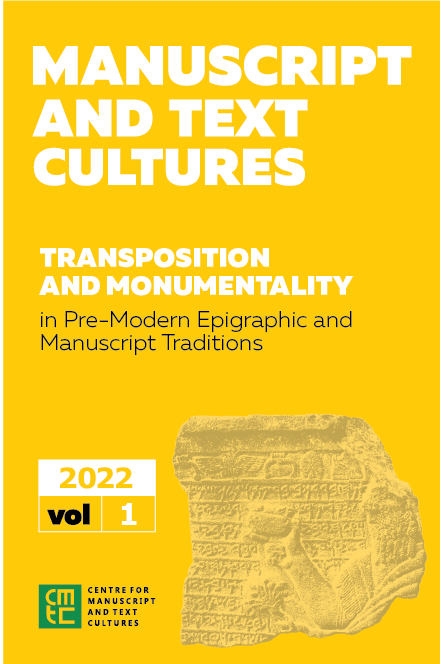Manuscripts and monuments: the ten contracts of Djefai-Hapi and economies of knowledge
DOI:
https://doi.org/10.56004/v1k83Keywords:
Asyut, Tebtynis, knowledge transfer, materiality, epistemic sites, tomb inscriptionAbstract
Reconfigured and recontextualized several times, the ten contracts inscribed on the walls of the monumental tomb of the regional governor Djefai-Hapi I at Asyut (c. 1920 BC) are a particularly striking example of how different material and different contexts generate new meaning. Originally written on papyrus or leather, the ten contracts between Djefai-Hapi and the priests of the main deities of his city and the necropolis staff ensured that Djefai-Hapi would be able to participate in the local cult(s) on a regular basis after his death. Put in a new context, the 'tomb edition' of the ten contracts went beyond Djefai-Hapi's insistence on later successors honouring his agreements. It exercised a powerful effect on Djefai-Hapi's deification in a dynamic interplay of monumental tomb-architecture, high-quality statues, elegant language used in the tomb-inscriptions, and Asyut's local cults. After more than two millennia, the contracts were stored in a temple more than 200km away from Asyut and did not have legal meaning any more. Instead, they had changed to a commemorative text written on papyrus. Defining and reconstructing actors, institutions, materials, and working processes provides insight into the colourful history of knowledge transfer in Ancient Egypt.
Downloads
Downloads
Published
How to Cite
Issue
Section
License
Copyright (c) 2022 Jochem Kahl

This work is licensed under a Creative Commons Attribution-ShareAlike 4.0 International License.

